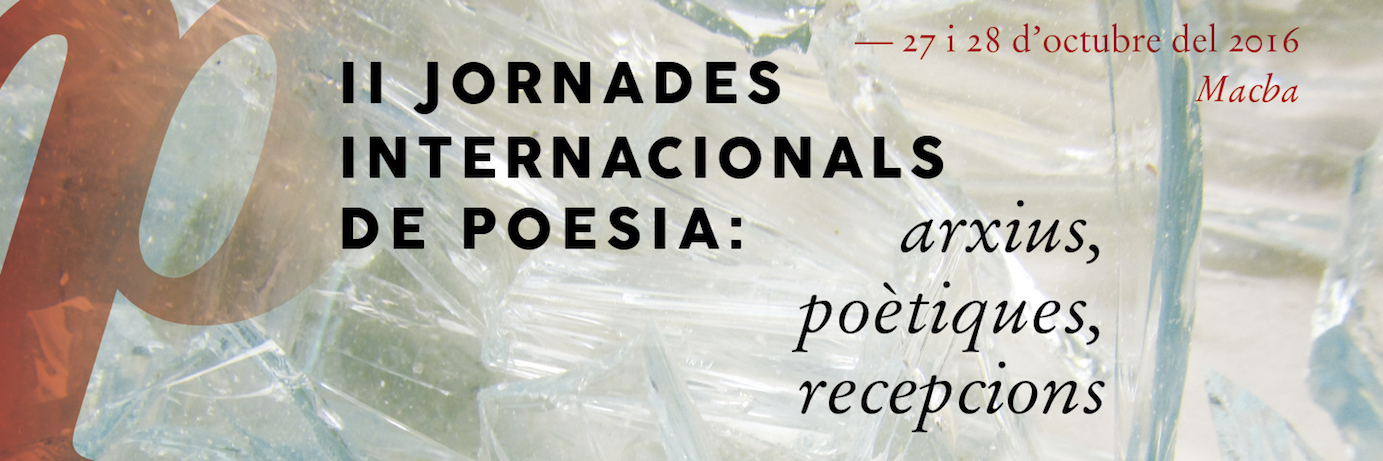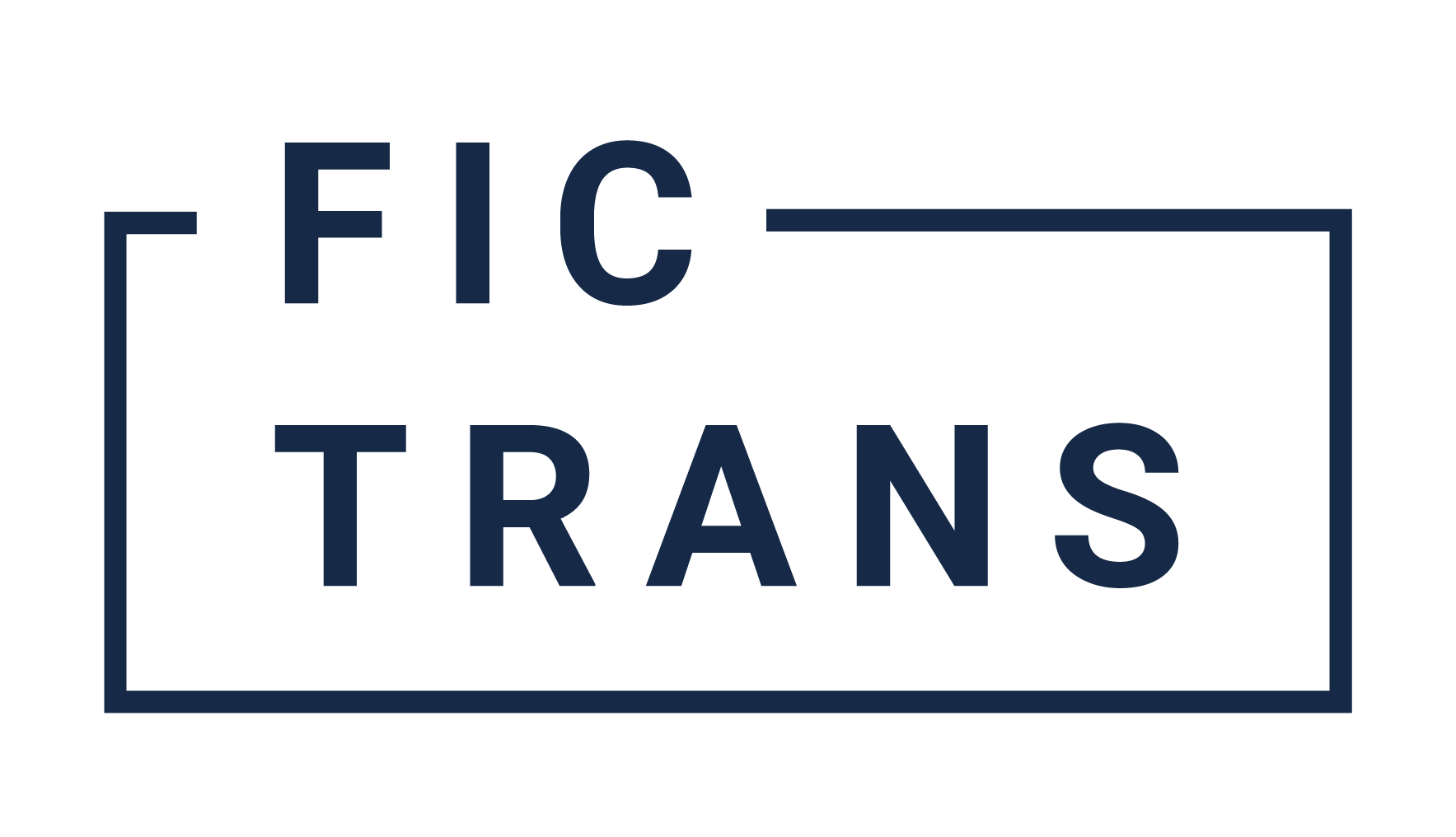Digital Archives and/as Transmediality

On October 27th, 2016, representing the NarTrans project, I have opened the “II Jornades Internacionals de Poesia: arxius, poètiques i recepcions” (at MACBA, Barcelona, Spain) with a Keynote entitled “Curating Digital Archives: Interoperability and Appropriation @ PO-EX.NET”. This post is a short and revised version of some issues discussed during my presentation.
Digital archives contain surrogates, encoded simulations of material objects and artifacts. Because their contents remain in flux, they also constitute performances of archival materials. By default and in its very nature, digital archives move their contents across media and platforms, adapting and metamorphosing them according to the specific materialities of the medium. In a networked environment, digital archives constitute an opportunity to revisit our concepts of mediation, representation and materiality. Moreover, digital archives (re)presenting electronic and experimental forms of literature (digital-born artifacts as well as other material artifacts) constitute a good ground for addressing the limitations and possibilities of remediation, translation, and materiality in our current media ecology.
Digital archives, thus resembling the impermanent and the fluid that we find in open forms textuality, have a variable and indeterminate quality that Wolfgang Ernst described as “not primarily about memory as cultural record but rather about a performative form of memory as communication”. Ernst further observed a transition from a fixed order into “permanent reconfigurability”, or “permanent state of latency” (2013: 99).
Jan Baetens and Jan Van Looy, discussing the digitalization of cultural heritages and the role of interpretation in their preservation, have argued that the web’s “primary function is not that of conservation (of inscriptions, archiving, possibly reproducing and diffusing), but one of transformation (of computer data and representation, mixed media)” (Baetens & Van Looy, 2007). The digital medium thus seems the appropriated interface for experimental forms of literature (both material and digital), which integrate different techniques and technologies, promoting the dissolution of boundaries between genres, between art and technology, enacting complex intersemiotic processes that invoke various sign systems. Digital archives enact transmedial processes, and experimental forms of literature, thus obliged to move across media, can be revisited, reprocessed, recontextualized.
We need to consider some of the affiliations between experimental and electronic literature(s) in order to better understand and recover these discontinuous textual relations across histories and forms.
One good example of a remediated process that discloses these affiliations is Jorge Luis Borges’ “La biblioteca de Babel” [The Library of Babel] (in El jardín de senderos que se bifurcan [The Garden of the Forrking Paths], 1941), where Borges imagines and conceives the infinite library, an idea that was later expanded to the infinite book, one made of sand (“El libro de arena”, 1975). One contains the other, and vice-versa. “The Library of Babel” is an interesting example for our discussion because Borges conceives and elaborates a recursive labyrinth for the unique (and therefore total) universal library from where all books stem. It’s almost a question of mathematics: each book is composed of 410 pages, each page has 40 lines, each line has 80 characters.
There are many possible ways of developing this idea with computer machines and programming languages, transmediating and transcoding its materiality into a new medium. Among many possible examples of re-readings and interpretations of the idea behind “The Library of Babel”, we could refer to Nick Montfort’s “Una página de Babel“, Jeremiah Johnson’s “BABEL“, Jonathan Basile’s “Library of Babel“, or André Sier’s “410“.
Untold archeologies between electronic literature and other expressive and material practices seem to surface in these works, embracing Borges’ fictionalized concepts and ideas. Other examples of affiliations abound, articulating the multiple diachronic and genealogical perspectives about electronic literature, providing room for comparative studies between art and technology.
Facing a new textual condition, one that is procedural and fluid, common to all experimental forms of literature (perhaps common to all literature…), these books of sand help us characterize our new textual condition: one that is variable and performative, indeterminate and procedural.
The performative and metamorphic dimension of experimental and electronic literature challenges our archival practices in ways that draw attention to the performative nature of digital archiving itself. Archives are about preservation and inscription, organization and relation. In a context characterized by increasing fragmentation and impermanence, re-reading and emulating become important strategies for enacting and curating the archive.
Digital Archives are networks of relationships in constant metamorphosis and renegotiation, as Osthoff has written (2009). Embodying these performative and reconfigurable possibilities, they indicate the replacement of the “archival order” by the dynamic nature of the “archival field”, as Ernst (2013: 99) has argued, and instead of being infatuated with the “static memory” of the traditional archive, we should move towards “an economy of circulation: permanent transformations and updating” (99).
Is this a new form of representation and preservation of our cultural memory? Are we moving from media to transmedia, and therefore from mediation to transmediation?
The intrinsic complexity of multimodal databases is a challenge that can stimulate the translation of data into new interfaces, and strategies for curating digital archives seem to also new forms of understanding the experimental nature of electronic literature and digital archives, may be achieved.
References
Baetens, Jan; Van Looy, Jan (2007). “Digitising Cultural Heritage The Role of Interpretation in Cultural Preservation“. Image & Narrative, no. 17, n.p.
Ernst, Wolfgang (2013). Digital Memory and the Archive. Ed. Parikka, Jussi. Minneapolis: University of Minnesota Press.
Osthoff, Simone (2009). Performing the Archive: The Transformation of the Archive in Contemporary Art from Repository of Documents to Art Medium. New York and Dresden: Atropos Press.

